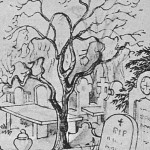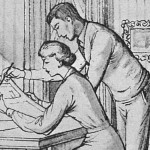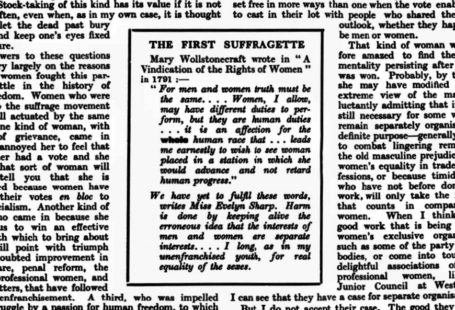Newspapers are an invaluable resource for researching your family history. Contained within their pages are tens of millions of reports, advertisements, and notices that can help you break down brick walls and tell richer stories about your ancestors. The Archive works with the British Library and publishers to bring you 300 years of newspapers from the UK and Ireland. Get the most out of our historical newspapers with these hints and tips.
What newspapers do we have?
We add more than 100,000 pages a week, and work continuously with the British Library and publishers to find new titles for the Archive. Currently we publish newspapers for Ireland, England, Scotland and Wales. We keep an up-to-date list of our latest additions. You can choose to see what we added in the last 30 days or the last 7 days.
What will you find?
1. Birth, Marriage & Death notices. These appear regularly after 1820. Among these you will find notices for those who were serving with the military abroad and those who emigrated to other countries such as the United States. You can narrow your name searches to ‘family notices’ in the side faceting of our search. (Click on image to enlarge.)

2. Civil & Army Promotions. If your ancestor was in the civil service or military services, their promotions and movements can be followed in the newspapers.

3. Advertisements. Early advertisements relied on words rather than images to get their message across, and these story-like advertisements can give you great insight into your ancestor’s business dealings.
4. Debtors. The names and addresses of debtors were printed in newspapers.

5. Court reports. Court reports feature regularly in newspapers and contain the names of defendants, victims, and witnesses. Court reports often provide physical descriptions of and testimonies by defendants, allowing you to ‘hear’ your ancestor’s voice.
6. Charitable donations & subscription lists. You will find long lists of names in the newspapers. These lists acknowledge charitable donations.
7. Public meetings. The minutes of public meetings are reported in newspapers. These reports will usually name the committee members.
8. Personal notices. These vary from requests for employment to notices asking for the return of lost property and pets such as this one from the Newcastle Courant in June 1740.

One of the more unusual types of notices published were those of gentlemen notifying the public that they were separated from their wives and no longer liable for her debts.

9. Photographs. Photographs start appearing regularly in newspapers in the 1920s. You can find photographs at earlier dates. It will be a lucky descendant who discovers that this is their Scottish family. Photographed in 1898, it portrays five generations! (Click to enlarge.)

10. News! News stories big and small were reported in the papers.
Searching Newspapers
1. Use surnames to search. First names were not always published. Your ancestor could be known as Mr Smith, or ‘a young lady called Smith’, married women will be reported as Mrs Smith or ‘Mrs John Smith’.
2. Don’t restrict yourself to your ‘local’ paper. Newspapers printed stories from all over the country, it is not unusual to find a story from Scotland published in a local paper from Devon.
3. Delayed news. In a time before the telephone, news could be delayed for several weeks. Search for at least a month after the event for more detailed accounts.
4. Language. Some of the language used can be unfamiliar, and the names by which we know a historical event might not be the name used to describe it when it happened, for example World War One was ‘The Great War’ or simply ‘the War’. In Ireland, WWII was known as ‘The Emergency’.
5. Repeated stories. You will find a story in several newspapers with different levels of detail; it is worth reading all of the versions to glean all the details of the events. You can read about an example of how several reports were used to fill in details of a tragic drowning in this blog post.
6. Front page, notices not news. The front page of newspapers often carried advertisements & notices rather than a ‘cover story’.
7. Optical Character Recognition. Newspapers are made searchable using OCR: the shapes of the letters are analysed using a computer programme and turned into searchable text. Fuzzy or blurred print can make it difficult for the computer to translate the material from an image to text. Keep this in mind when doing searches. Try a few different search terms and combinations of search terms to compensate.
Be aware! Private details are made public. Historical newspapers printed details that would not be included in modern newspaper reports. The details of events can be quite graphic. Incidents such as suicides were reported with full details including the name of the person and the circumstances of their death.







1 comments On Newspapers for Family History
Thats so interesting. I would like to know who my ancestors. Interesting article, waiting for more. 🙂